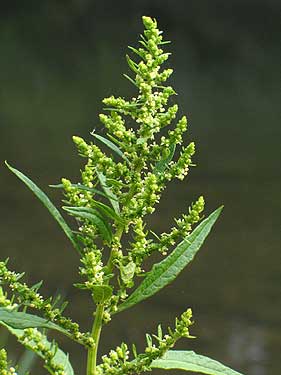Fact sheet about Dysphania ambrosioides
Distribution and habitat
It is found throughout the tropical and subtropical regions of the world, but mostly polymorphic in South America. It is found in a variety of disturbed habitats, gardens, cultivated fields, waste ground but most often on sand by rivers. Preferred altitude ranges between 550-1620 m. Exotic in Africa. In Kenya, it is found in Tsavo East National Park, in Nyeri, Limuru, Thika, Machakos and Laikipia.
Flowering and fruiting habits
It is a hermaphroditic herb, up to 180cm tall, upright, green and branched, usually annual. The leaves are mostly lanceolate, up to 4 x 1cm and toothed. Flowers are small, green, in an elongate, dense, terminal structure. Fruits are green or brown with a strong odour and a pungent and bitter taste. Seed coat is reddish brown to black.
Uses other than pesticidal
Medicinal: Tea made from D. ambrosioides is drunk to expel parasitic worms from the body of humans and livestock. It is also used as a remedy for stomach pains, to detoxify snakebites and other poisons and to clean wounds and haemorrhoids. The oil derived from the plant is used to treat athlete’s foot and insect bites.
Propagation and cultivation
D. ambrosioides grows easily in most soils but prefers sandy loam and sunny dry zones and soil pH 5.2-8.3. Seeds germinate easily when sown fresh. Germination rates are good and seedlings appear within a few days of sowing the seed.
Seed collection & Storage
The fruits are sieved to remove the husks.
Seed behaviour is orthodox. Viability of air-dried seeds can be maintained for several years in hermetic storage.
Parts used
Leaves, whole plants
Preparation
Boiling leaves to produce a decoction
Essential oil
Grind dried leaves to produce powder
Often layered whole plants in storage, occasional stirring to release volatile compounds
Uses
As a fumigant
A fungicide in post-harvest grain
Added to fertiliser
Added to stored beans at 0.5% w/w
Added to stored maize at 5% w/w
Target organisms
Mosquitoes, flies and snails
Fungi
Against insect larvae
Against bruchids in beans
Against storage pests, e.g., Sitophilus zeamais

